Svidník is a town in Eastern Slovakia close to the Polish and Ukrainian borders. I have visited this town when I was a child, but my husband hasn't been to this region yet, so we decided to explore it when we visited my aunt who lives in Bardejov. She lost her husband to cancer last year, and we take every opportunity to visit her now. This time we spent 3 days with her which were filled with activities and lots of food and laughter. We had a great time!
We planned to go to Svidník early in the morning, but as usually we were not that fast and left just before lunchtime. It was a hot day, so we didn't want to roam the city and decided to go to The Open-Air Museum of Ukrainian Culture instead.
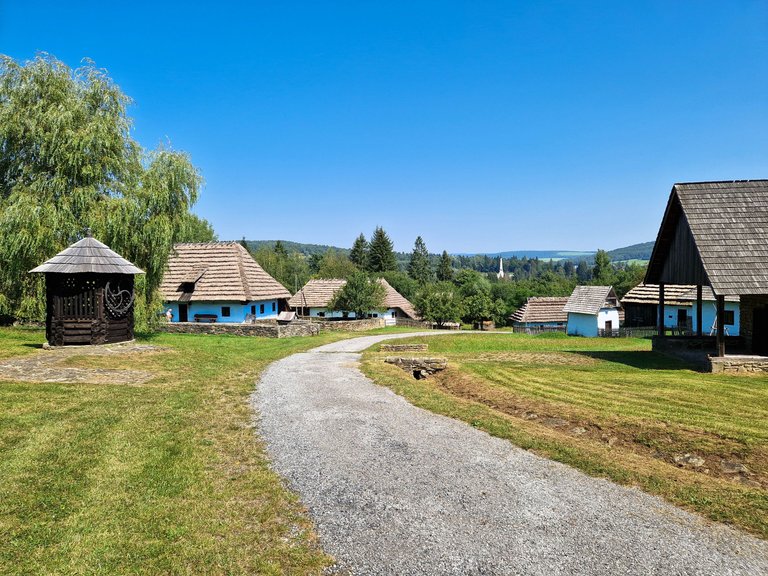
It's a museum which consists of traditional cottages that you can visit and learn about local traditions and culture. The museum is situated on top of a hill and we realized that we could park there after we got there by foot. I don't remember when was the last time that I was sweating so much, but let's not go into too much detail 🙂
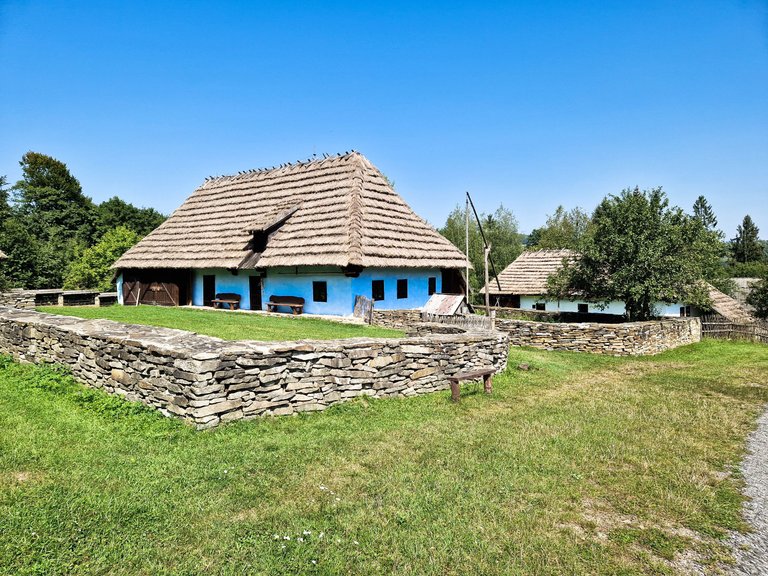
There were no other visitors when we arrived, but we could see a bus with tourists parking at a location nearby, so we took some photos of the complex before going inside of the cottages. It's good that we did so as the area was full of tourists in no time.
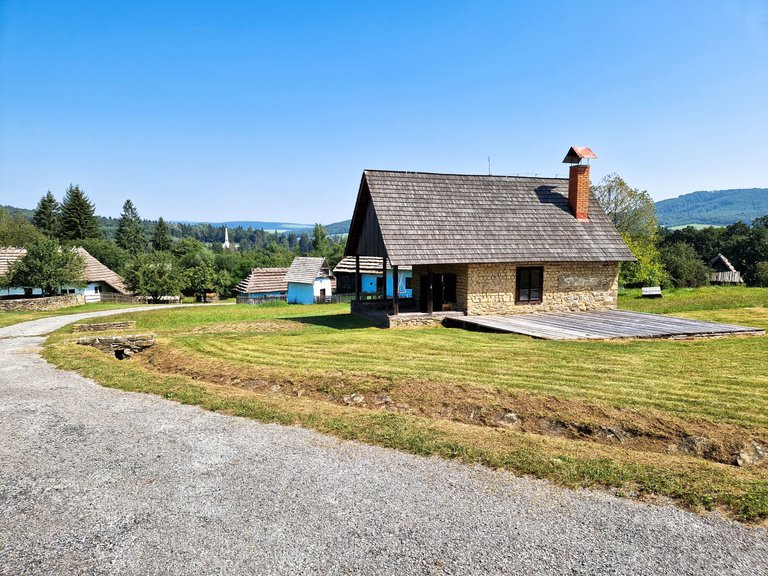
The museum resembles a small village with everything what was necessary in the past. You can find there cottages, a church, a school, a mill, a blacksmith, a tavern, granaries and much more.
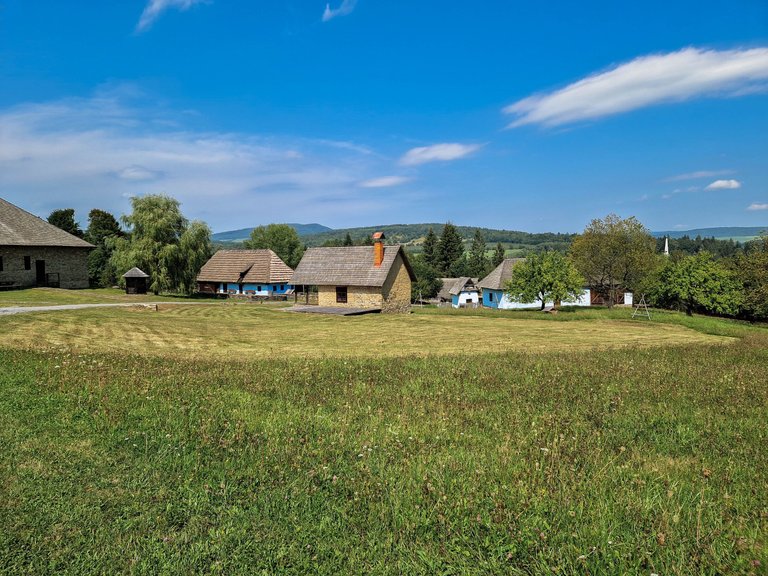
It opened in 1982 after relocation of all buildings from their original locations. Today, it shows us the living conditions of Slovak Ukrainians in the past. Even to this day, all the road signs in Svidník are written in both Slovak and Ukrainian. The oldest construction in the museum dates back to the 17th century.
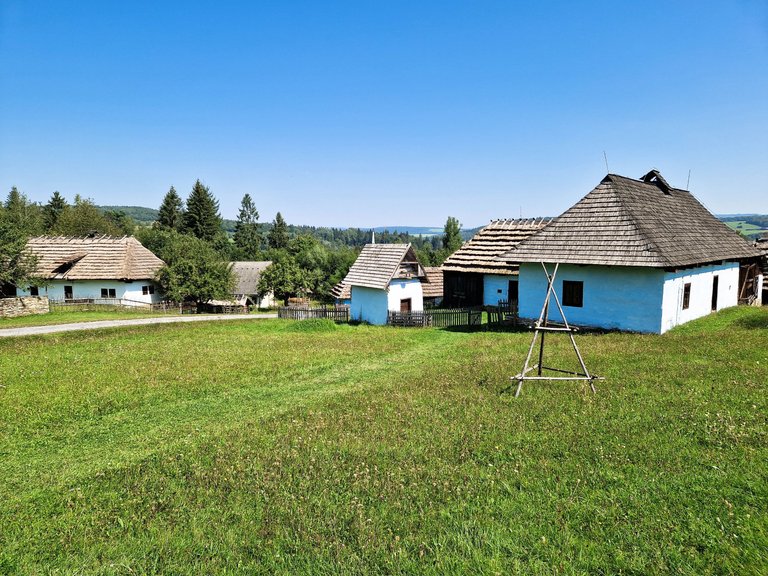
We were in desperate need of some drinks, so our first steps led us to the tavern. We were offered some beer or soft drink, but there is no fridge, so we were expecting somehow warm drinks. However, this old stone house has great thermoregulation and it was chilly inside, so our drinks had a perfect temperature.
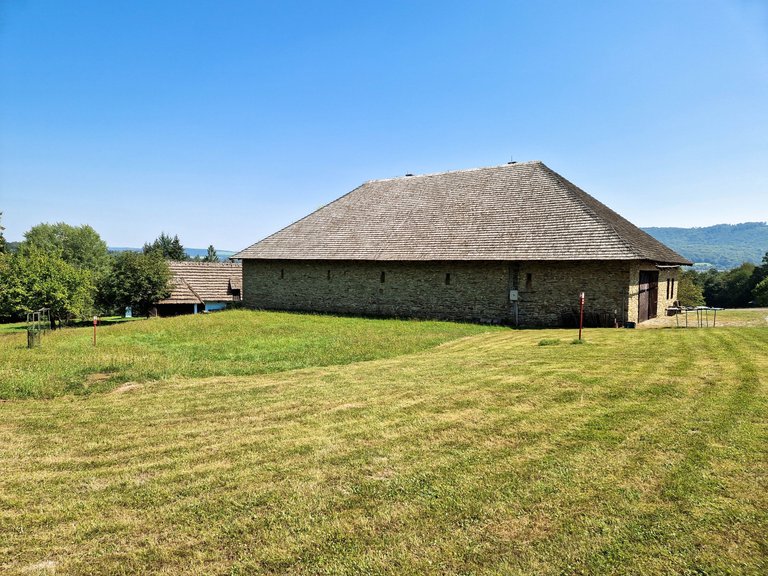
The tavern was decorated with traditional clothes and items needed for harvest. There were also period photos hanging on the walls.
On this side we could see clothing of a village boy.
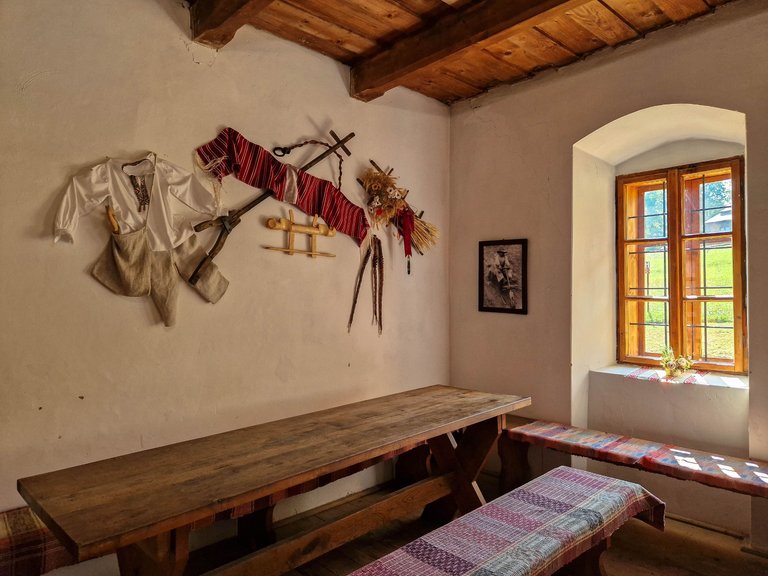
And on this side we could see clothing of a village girl with a rake which was needed to place hay in dedicated spots. I remember when my grandma and grandpa were bringing tons of hay from our fields. They layered it in a big pile and we climbed on the roof of their shed and jumped on it. I remember it being soft even though now I can't imagine that it was pleasant for my skin to jump into dried grass. I got bitten once by a garden snake hiding in the pile and this was the last time that I ever jumped on it. I'm scared of snakes ever since.
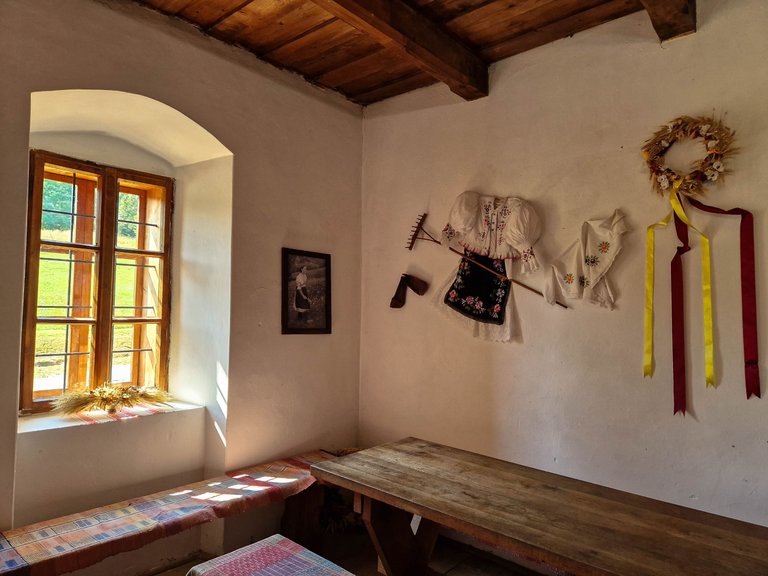
After we finished our drinks we started our tour by going inside of cottages. Most of the cottages have either one or two rooms. One room is residential and the other room (if there) was used to store material, tools, grains, etc. This cottage belonged to a poor farmer family and it only has one room. This means that the farmer had to lend all materials and tools for their work from wealthier families.

It was a charming room that was used as the living room, the bedroom and the kitchen at the same time. My aunt remembers this kind of stove from my grandparents house. They used to live in a clay house too until they were relocated and asked to build a brick house instead. My mom was a baby, so she doesn't remember much from this time, but it was interesting to go through this museum with my aunt as she recognized so many items and explained to us how they were used.
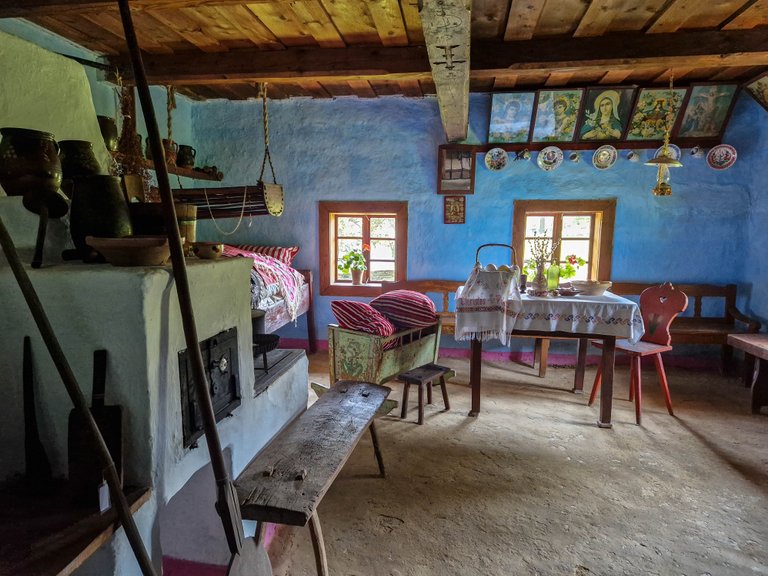
Here we can see a cottage from the late 19th century with beautiful straw roof. It has two entrances, and it also looks bigger than the former one. Let's get closer...
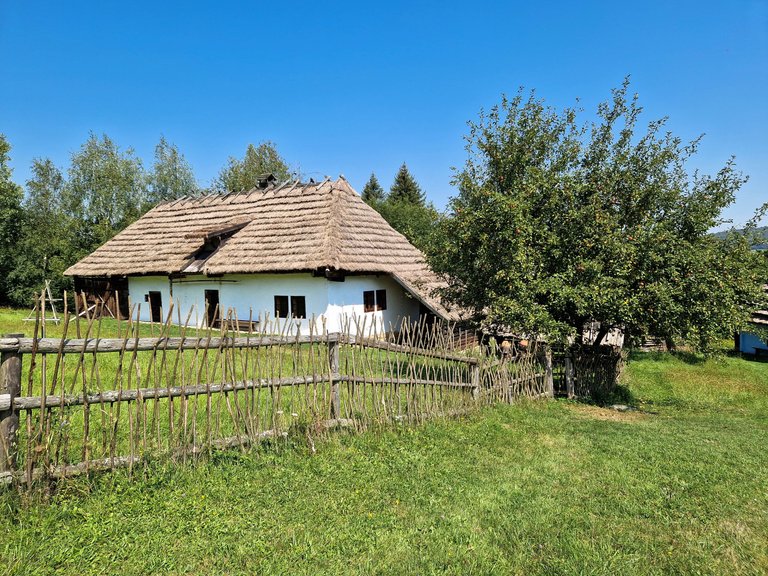
Pottery is my passion, and I'm always happy to see such old pieces. In the past it was common to hang them on the fence like this. It was used for milk or beer.

I don't remember the name of the plant, but my aunt mentioned that they used to suck the nectar out of its flowers as kids. Apparently it is delicious, and no, I didn't try 🙂
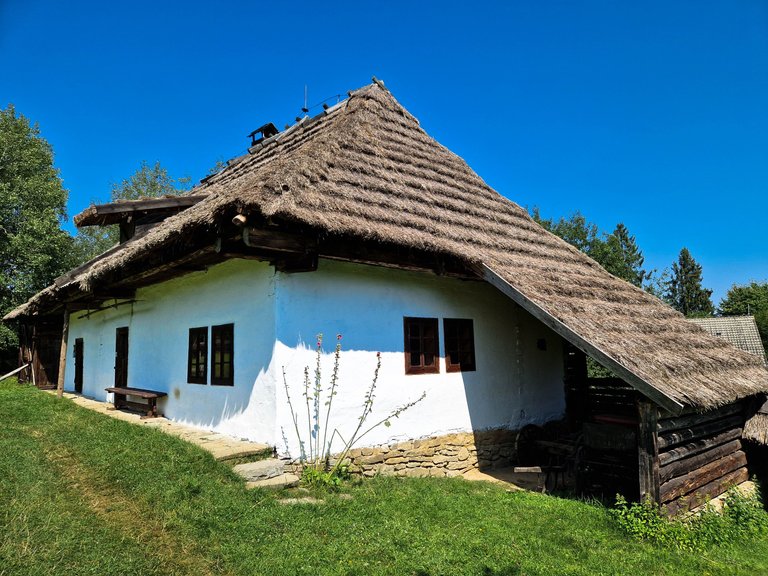
There were many windows in this cottage which is unusual for such houses. Today, we love to get a lot of light inside of our rooms, but in the past in was impractical. The cold was coming through the windows in winter and in summer there was too much heat.
My mom used this kind of crib for my younger sister. I remember it as it was so big that it took big part of our room.
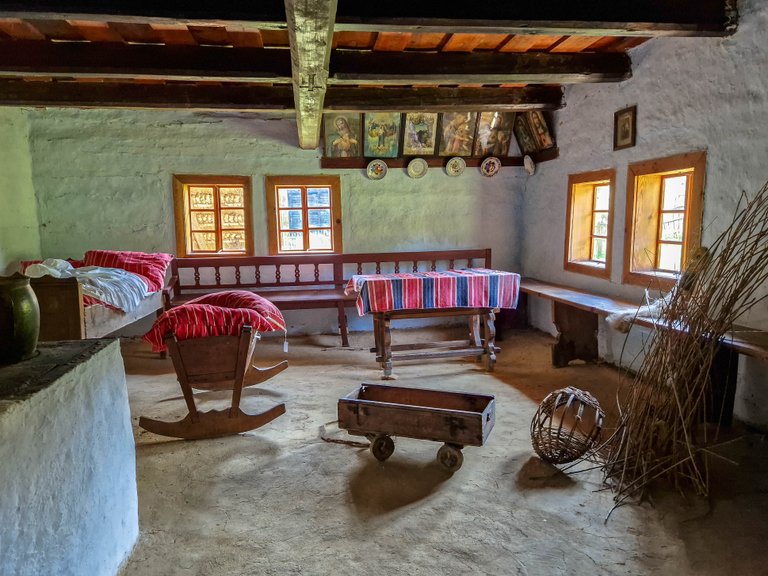
People were living simple lives which can be seen on their utensils as well. They didn't have tap water, but had to take water from wells. Personal hygiene was almost non existent and the clothes were washed in ice cold creeks. We are so lucky with what we have today.
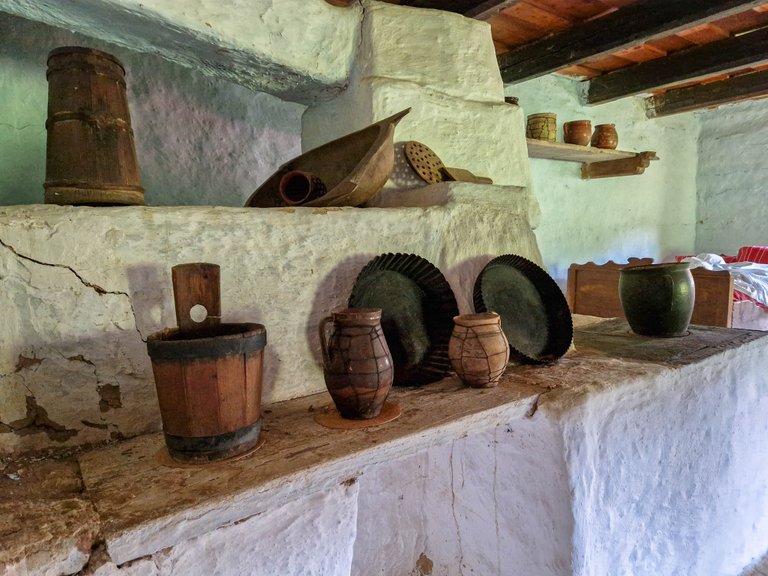
The second room was used for fabrics production. The family used to make carpets as well, you can see one of them on the left side.

Separate granary was one of the signs of wealth...

There are still sheep in this stall. They were grazing the grass nearby and I didn't go inside as it didn't smell well...

Most of the clay cottages are blue. I tried to look for some information about it, but I didn't find anything. I wonder if it was in fashion at that time. Let's go inside!

You can see that this room is not as fancy as the other ones. It belonged to a peasant family. Look at the floor - I always thought that it was a special clay mix, but I learned from my aunt that it's a normal clay found everywhere. It was soaked in water and pressed on the floor. There is a rough layer at the bottom with less water which is topped with a finer layer that was mixed with lots of water. It turned sturdy when it dried. You only needed clay and water if there were any repairs needed. And kids loved to help as who doesn't like playing with clay, right?
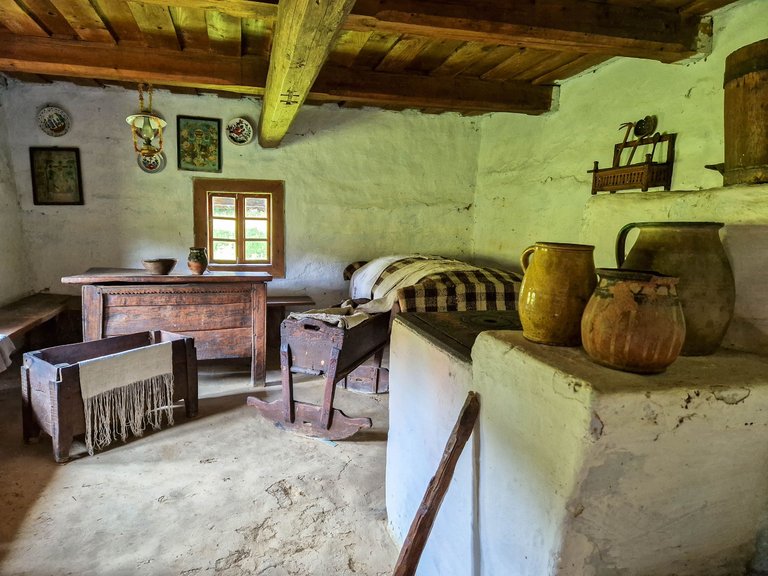
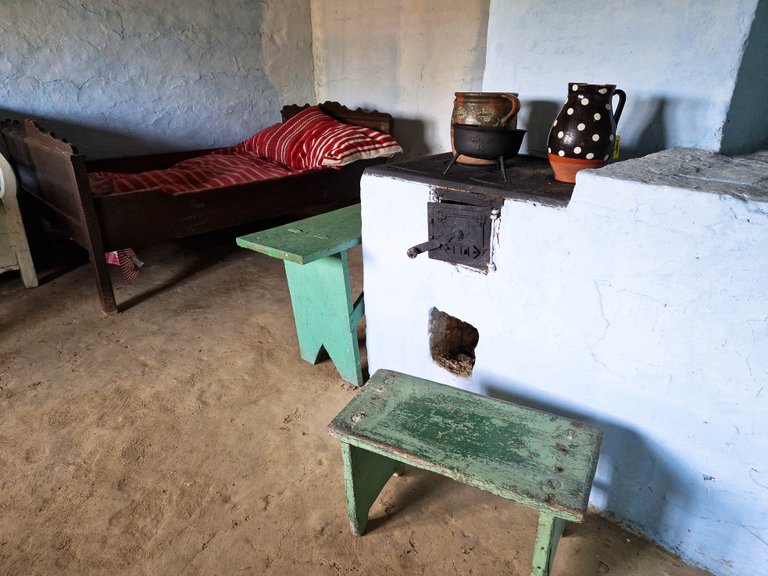
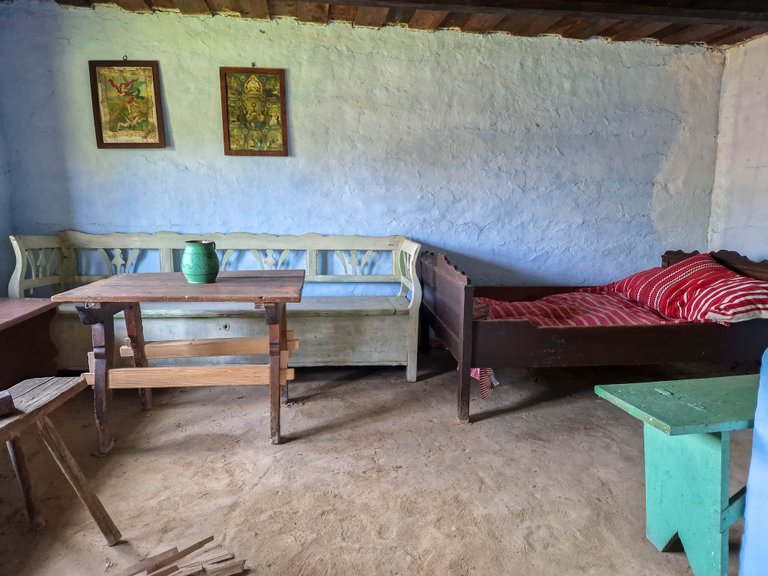
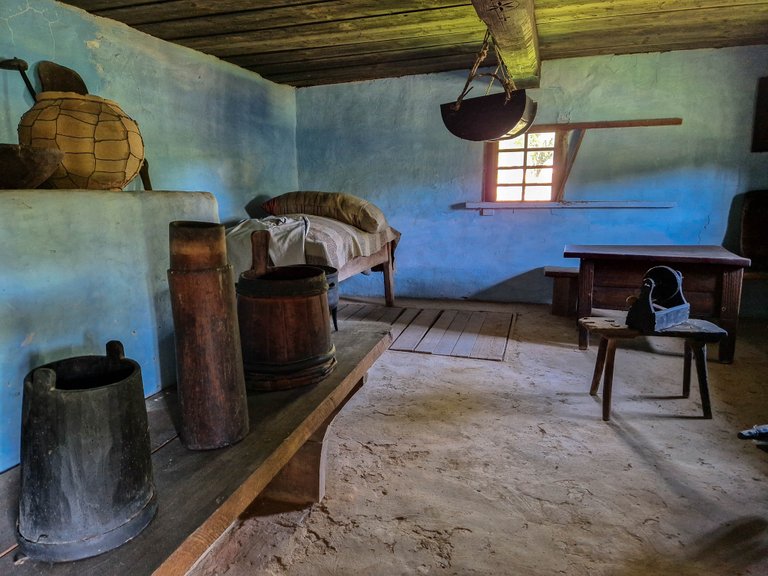
Another part of the exhibition shows wooden cottages.
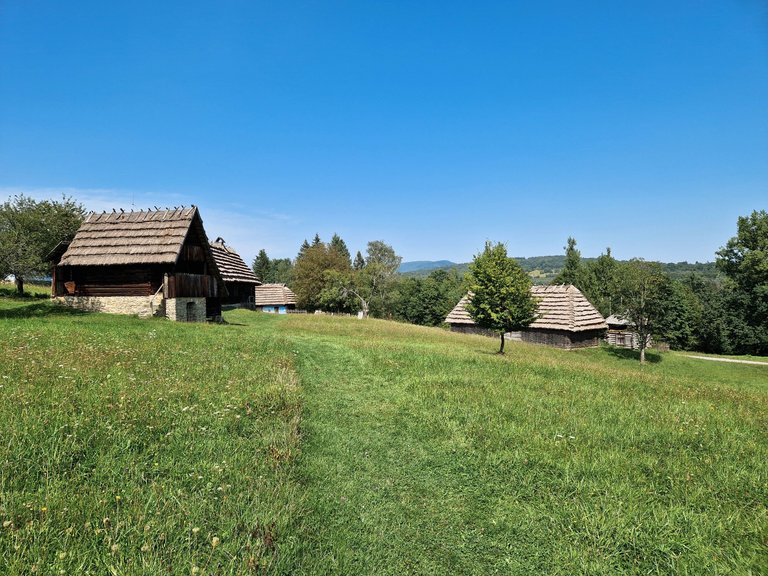
This is one of the newest houses as it dates to the beginning of the 20th century, just before the World War II. It has two rooms, storage space under the roof and basement that can be reached from the right side of the gangway. The house was decorated with geraniums which were common at that time. Some people still grow them, but not as much as in the past.
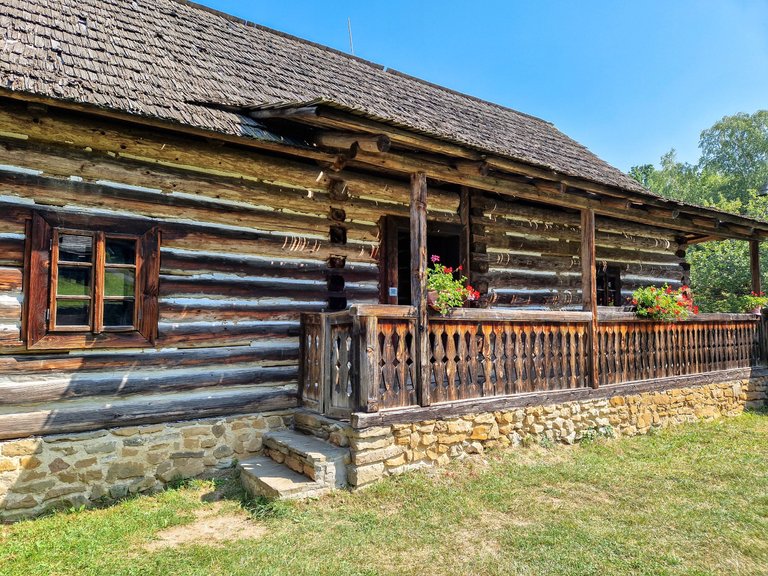
This is the first house with wooden floors and small carpets for comfort. There is even a mirror which was a luxury as mirrors were expensive.
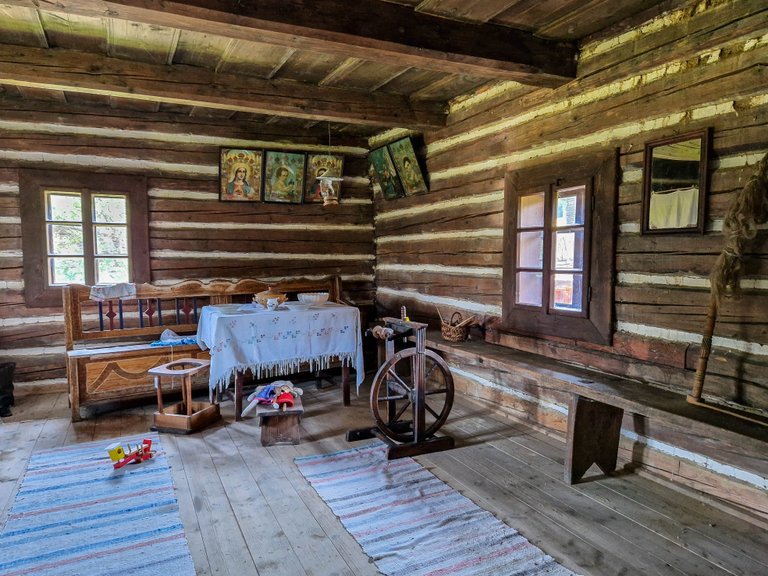
There is also a kitchen cabinet for the utensils. They still used the old stove, but they didn't use it for storage anymore.
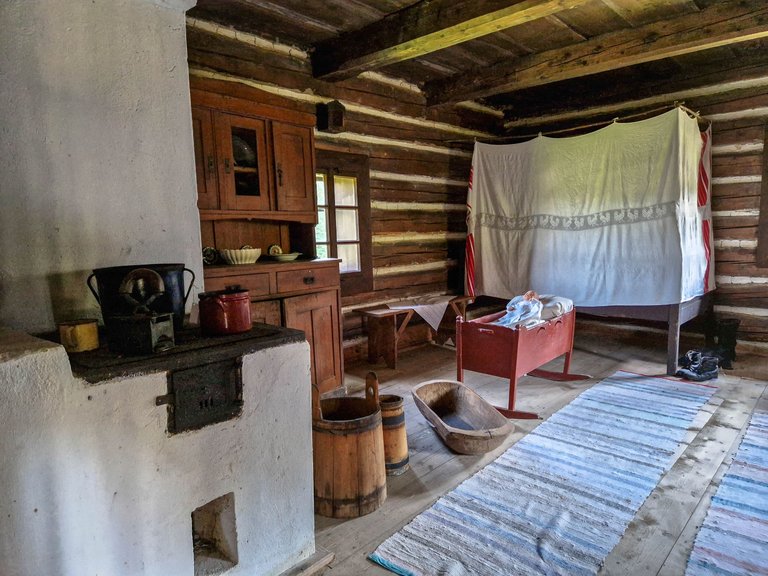
This house had a separate dining room. Can you see that tool in the middle of the bench? It was used to make butter.

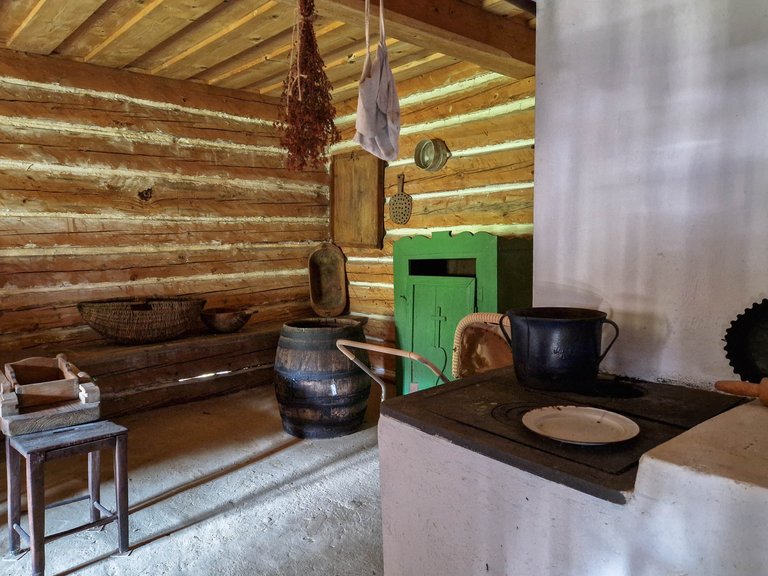
I can imagine sitting on the gangway with my matcha latte...
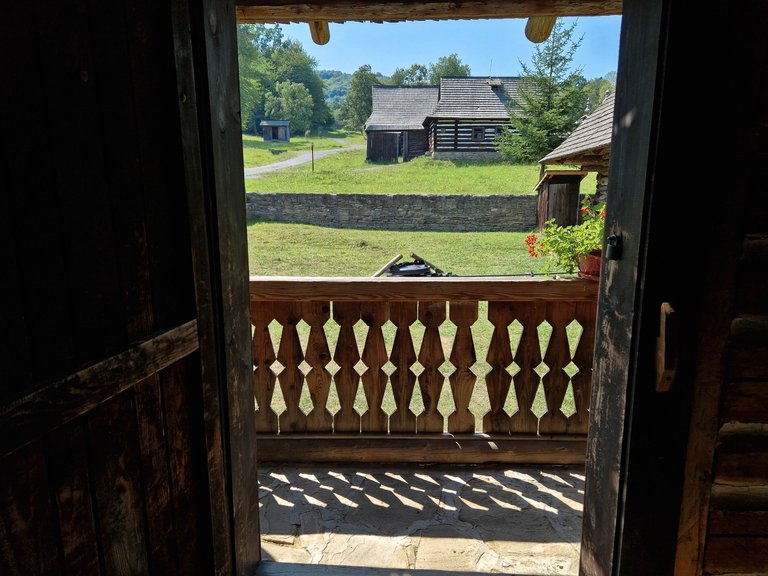
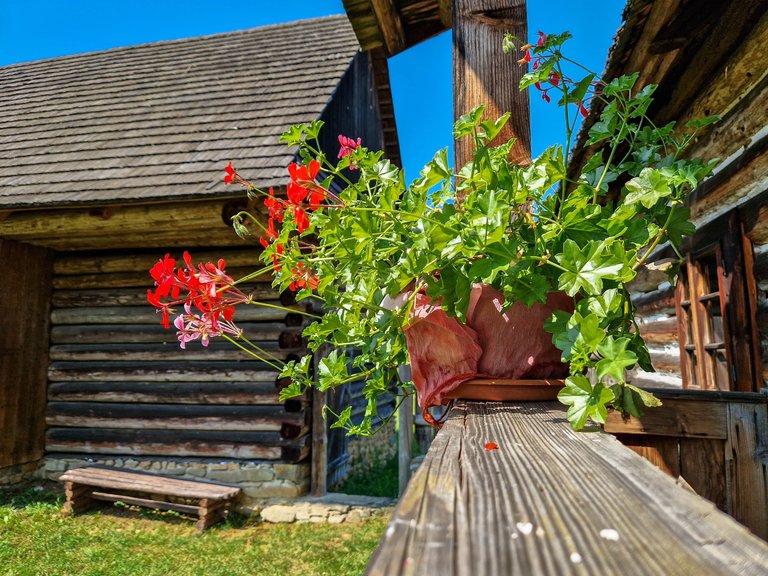
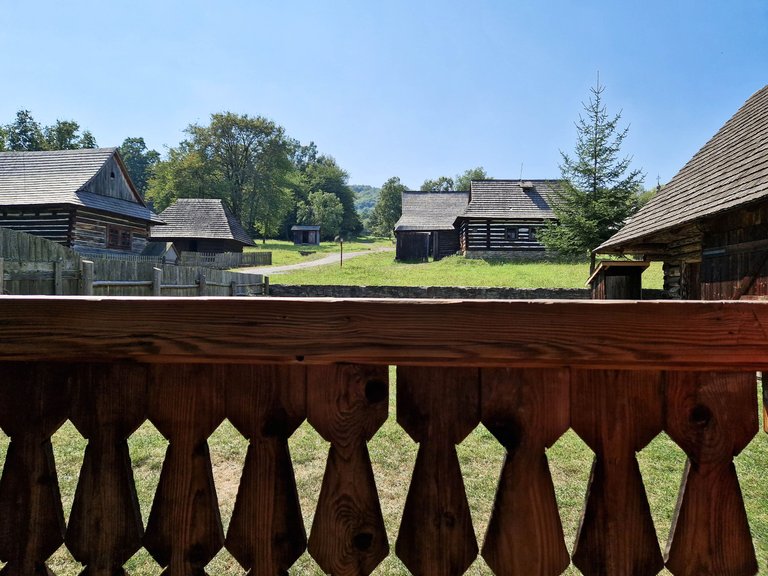
The entrance to the basement which is basically a dark hole. It was so cold even though it was 35 degrees outside, so it must have been used for food storage.
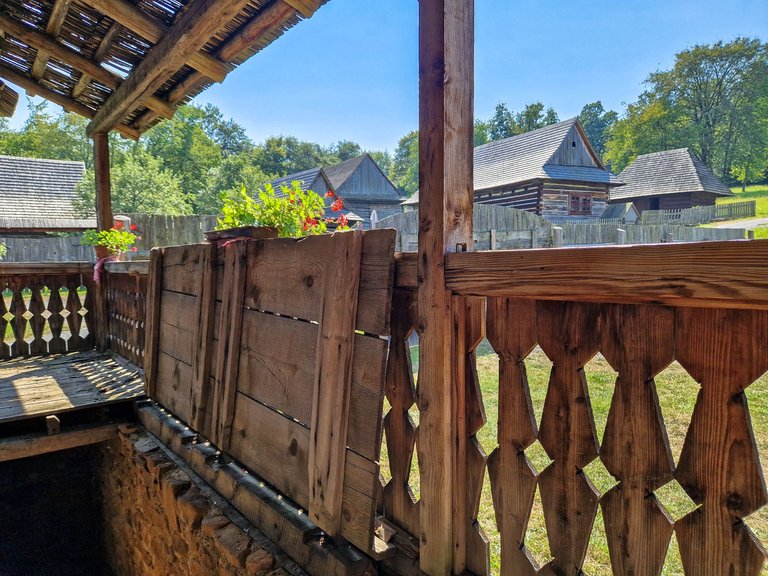
This peasant homestead consists of multiple buildings. It was the largest construction that we saw there. It even had a large gate which means that they owned a carriage and animals.
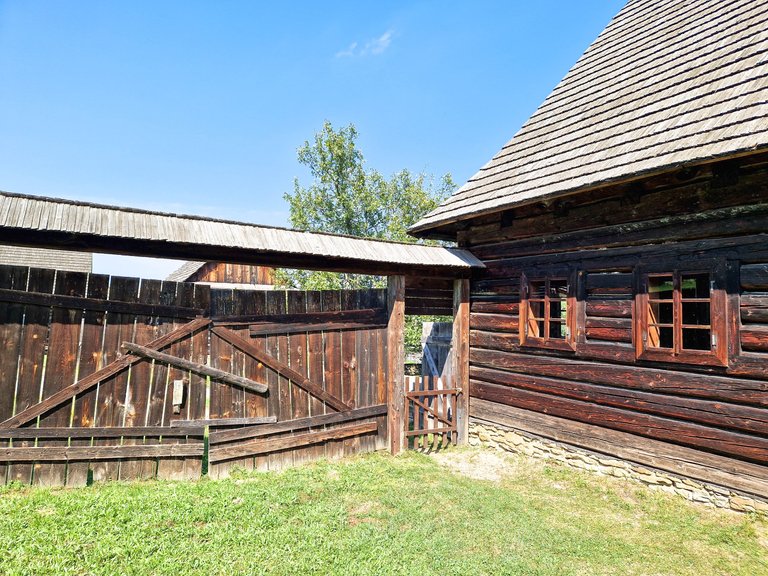
My aunt remembers ironing with this kind of iron. You filled it with hot coals and were ready to go. It sounds too dangerous to me, so I'm grateful for our modern iron 🙂
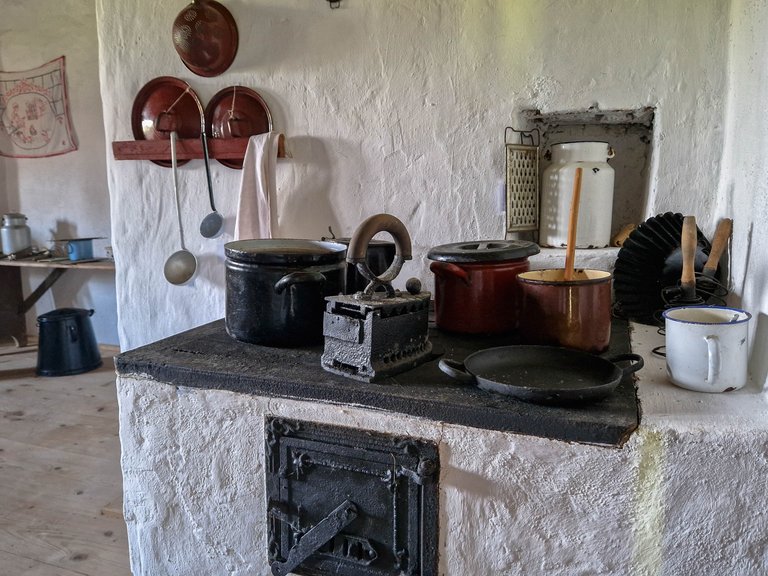
Homemade bread was a must. They were large and one piece of bread was enough for a meal.
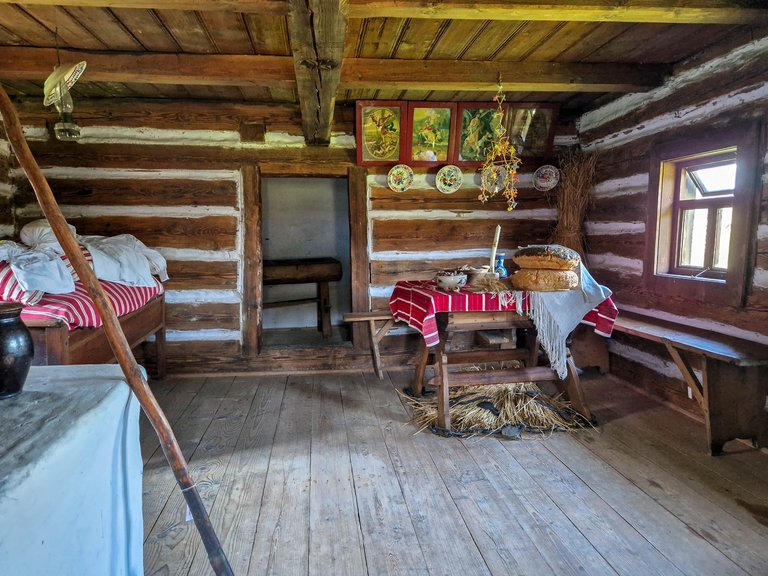
I remember such pillows and blankets. They are filled with feathers and so heavy. I couldn't move in bed when I was staying over at my grandma's place.
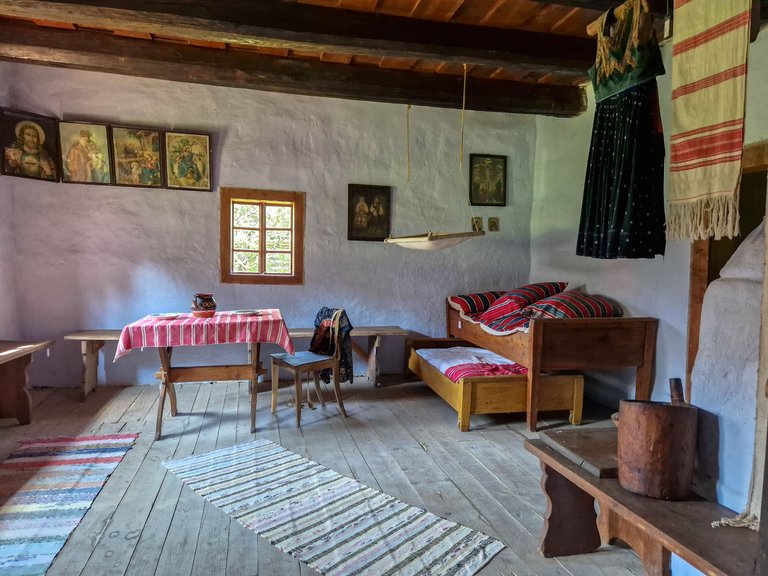
There are many museums like this one across Slovakia. It is interesting to visit more of them as the culture and traditions differed between regions.
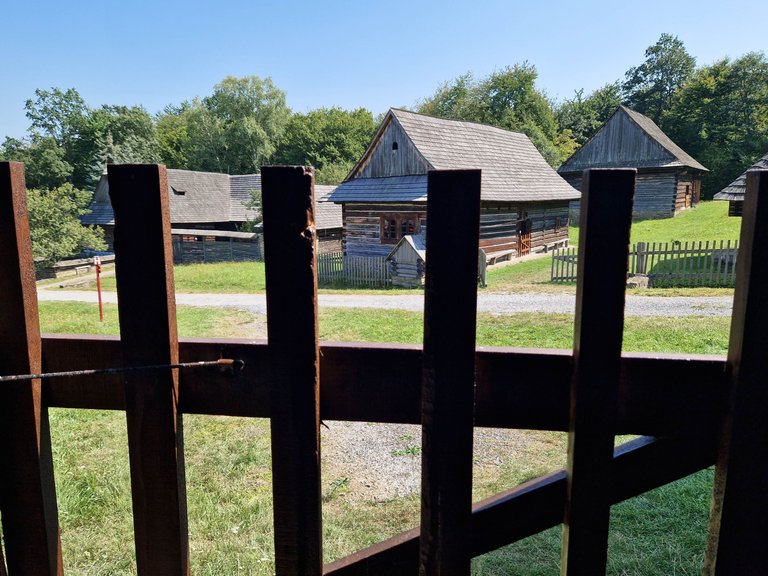
I admire the craftmanship of that generations as these houses were built with no nails...
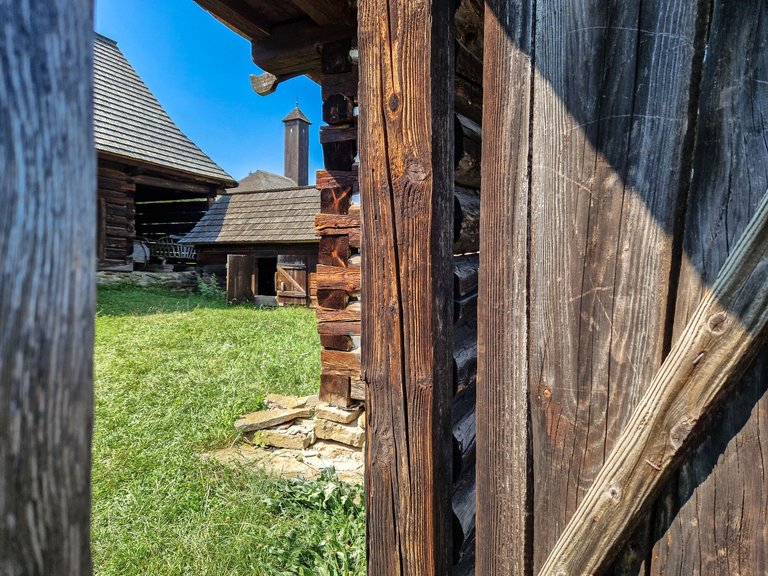
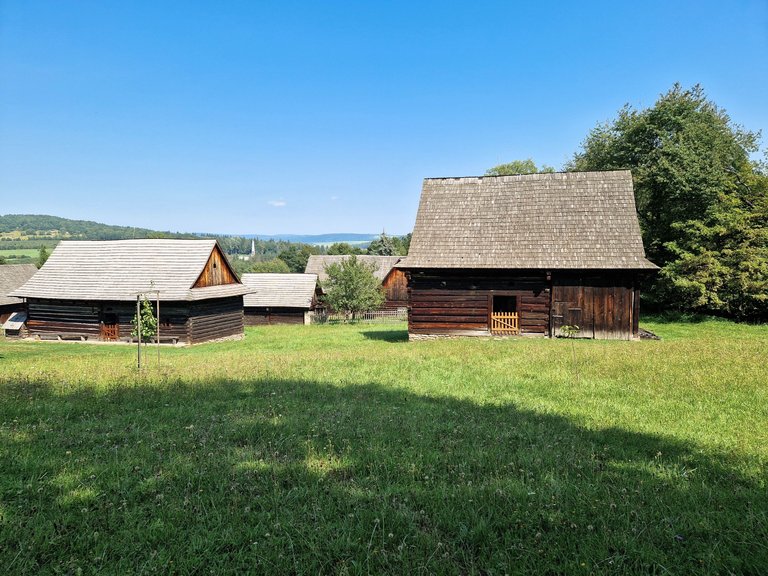
This was the most pleasant part of our visit as there was some shade and a creek. It's a miller's homestead dating back to the 19th century. It was specialized in corn milling.
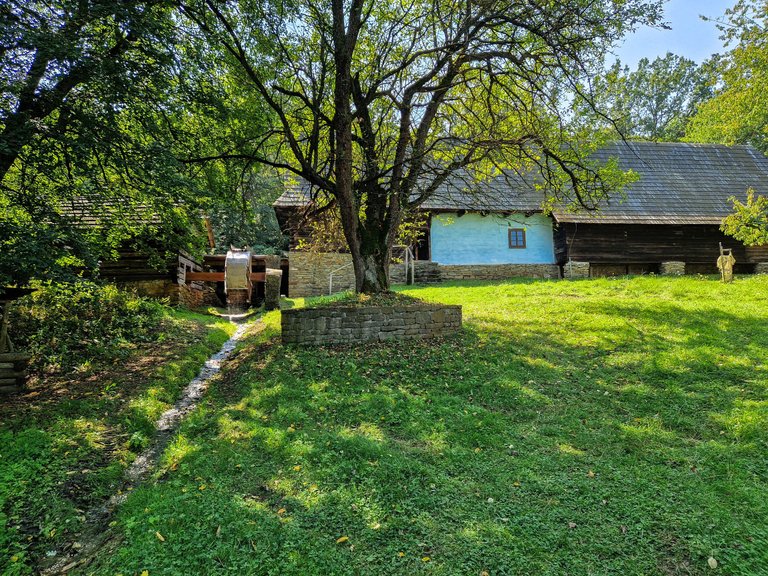
The homestead has the best views!
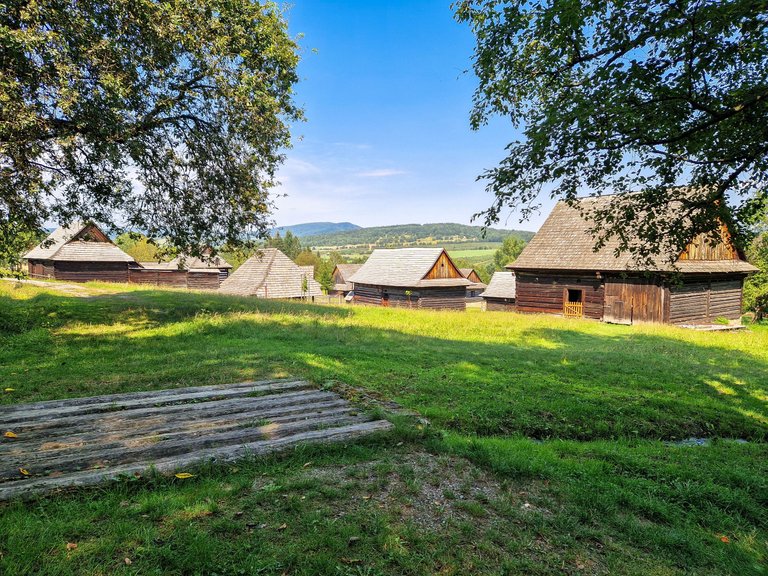
It also included a small granary to store grains and corn.

Interior was spacious, but rather simple. There was one room which was used as a waiting room for people waiting for fresh flour.
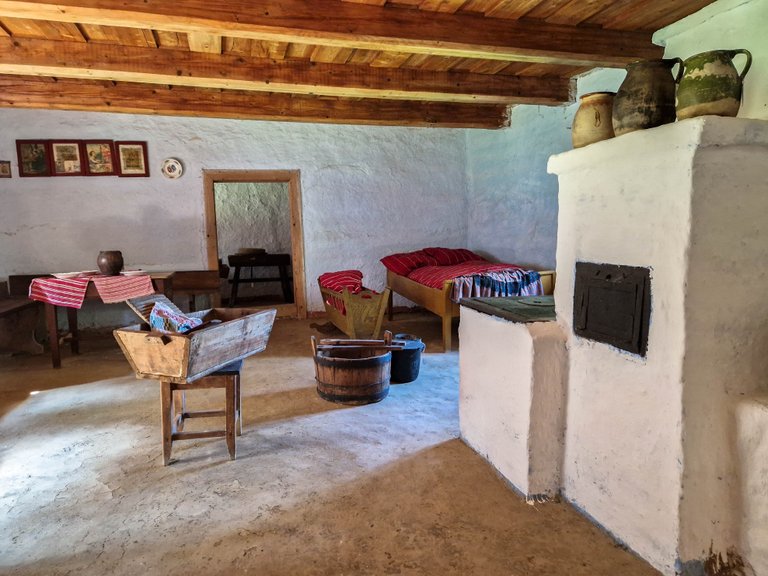
We are slowly coming to the end of our tour, but first we will visit the school and the church.

Entrance of the school is decorated with geraniums...
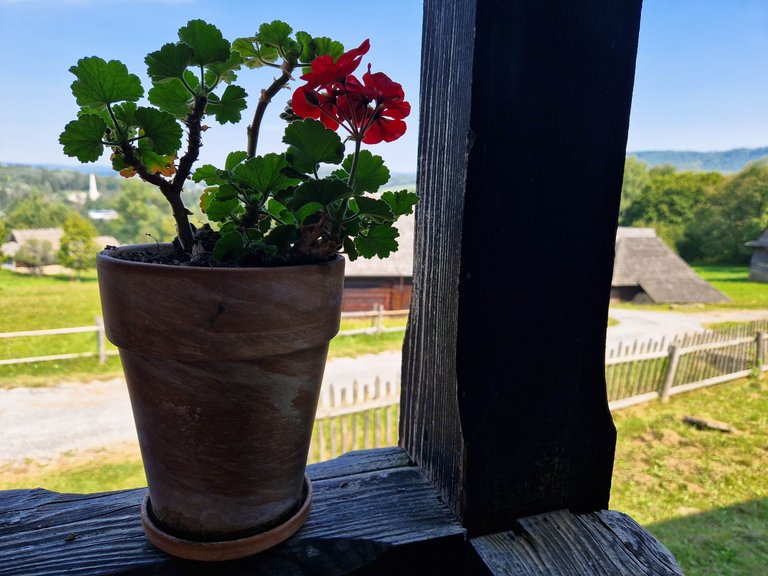
This was a typical classroom with benches and kids sitting next to each other...
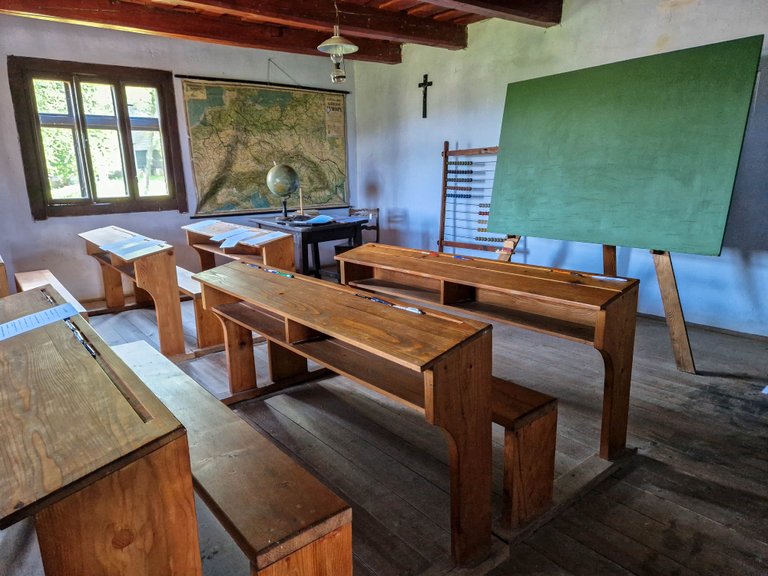
The view from the school is not bad...
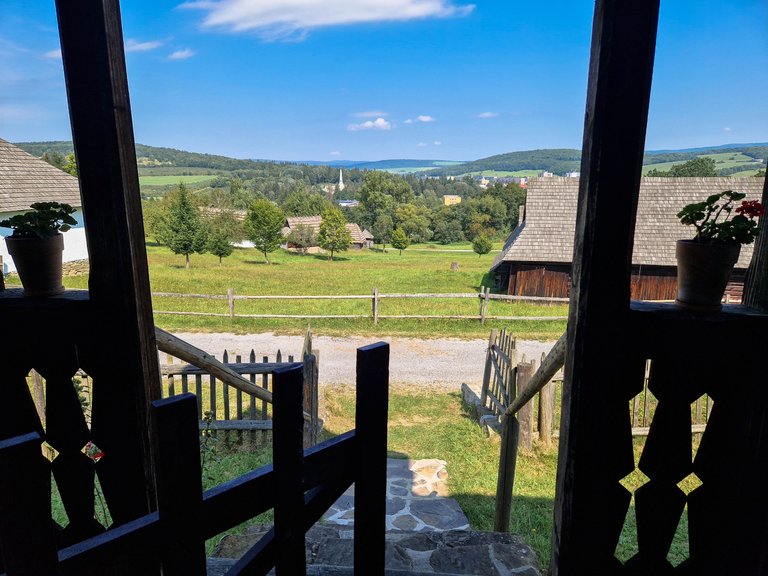
Let's go to the church! It was originally built in Nová Polianka in 1766 and it's still used for celebrations.
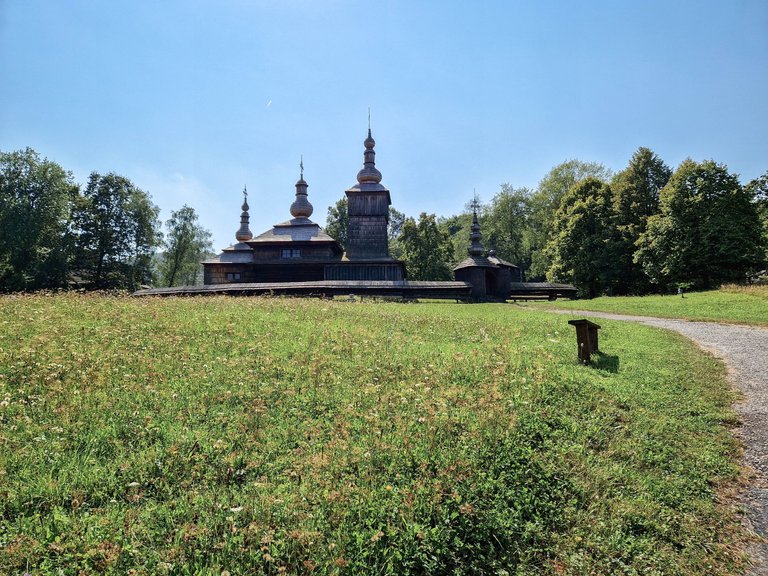
There is a bell tower in front of the church and we could ring the bells too!
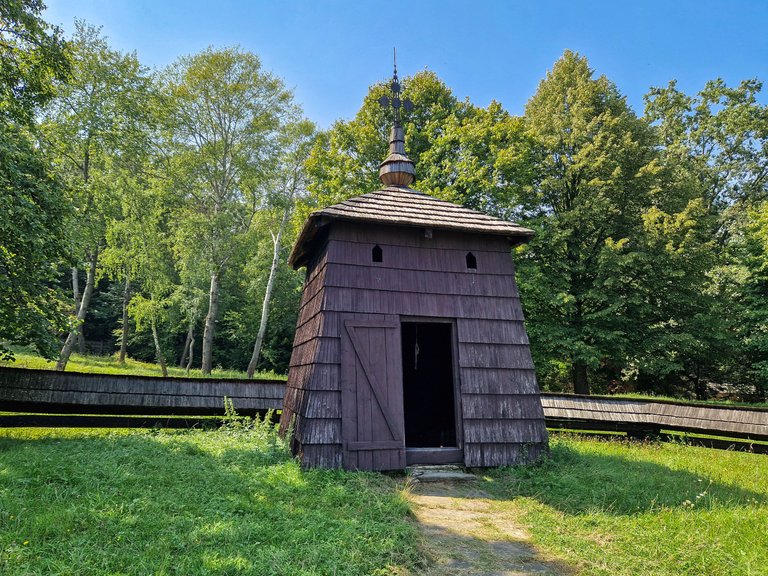
This is an orthodox church and even the entrance is decorated with typical tower...

The wooden iconostas is from the 18th century and it's decorate with traditional gold and red colors.
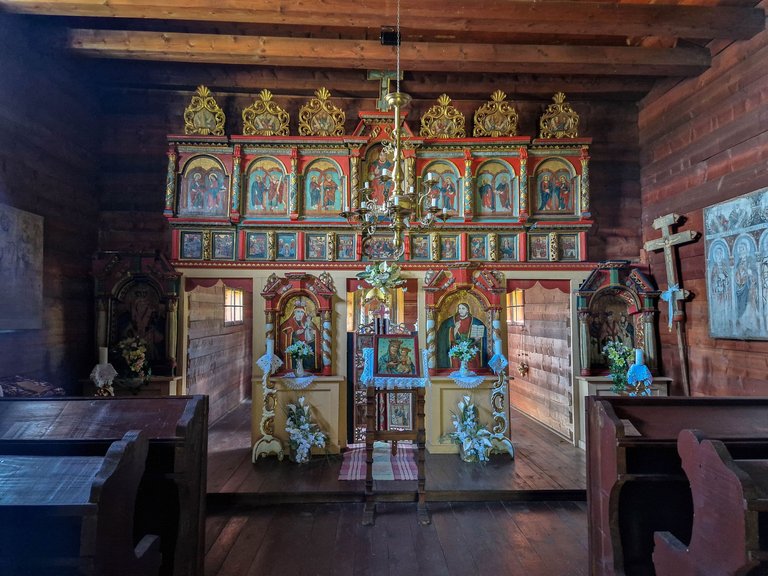
We enjoyed the museum, but it was time to go back to Bardejov to get ready for our evening programme. Little did we know that our plans will change unexpectedly, but I will tell you about it another time.
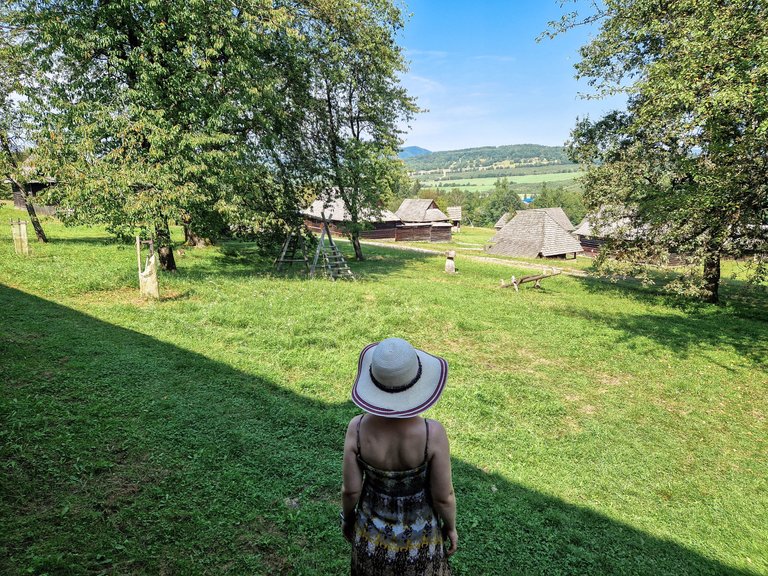
Thank you for reading!
Cheers,
Martina
Awww, those houses are so sweet! 💛💛💛💛 I like everything! And can't wait to show you around a similar museum here! You would like it! And there's a lot of shadow there ))
I did it too )))
In my childhood, the neighbor of my grandmother used to make carpets on the same machine. She allowed me to help her a few times - I was so excited and happy!
I remember most houses were blue too. Maybe it was the most obtainable and inexpensive dye.
My mother and mother-in-law :D :D But not me.
A miller's homestead and no mill?
OMG, I remember I was sitting at the desk like this during my first school year...
What a nice tour. Thank you!
I'm sure that you have similar museums as this one is showing Ukrainian culture in Slovakia 🙂 Can't wait to see it!
My grandma tried to teach me, but my interests were always somewhere else. I'm not so handy..
Whatever it was, those houses look cute in blue 🙂
There was a small mill wheel. You can see it in one of the pictures, it's just hidden a bit...
We had another classrooms when I went to school, but cool to hear that you still experienced those long tables and benches 🙂
Thank you for stopping by and see you in two weeks! 😘
Can't wait! 😘
Very nice of you to make the decision to spend time with your aunt, to know that loneliness is I think the worst illness.
I didn't know there was such a special place in Slovakia, it's right on my heart, I love such places.
It reminds me of the Astra Open Air Museum in Sibiu County, Romania.
A very captivating post that made me think I had actually visited this place.
She doesn't have kids, so she appreciates every visit that she gets. We got so spoiled with delicious food 🙂
There are many more places like this in Slovakia and I love them all.
Great tip! I will make sure to visit it when I'll be around 🙂
Thanks a lot for your kind words!
What a wonderful place, a great trip to another time, another era, and I loved seeing each space.
I really like the wood and those constructions are very warm and rustic.
Thank you for this great trip that I have been able to make thanks to your photographs @delishtreats ❤️
Thank you for stopping by! It's always nice to visit such places to see the differences between generations over the centuries.
Have a lovely weekend!
Yes it is, I love history and art and in that place there is all that. Have a great weekend!
Oh my, what a beautiful place. That is marvellous that these open-air museums exist, so much to see and learn from the past! The blue walls of the cottages are an interesting and nice feature that adds to their cuteness. There are some Slovak villages in Serbia that I passed through and there were houses with blue walls!
What view from the school... I would love to get out of the classroom every 5 minutes to see it :D
Indeed, it's great for learning and also for appreciating of what we have today 🙂 I know about those villages. They also keep the language, but it's the old version, so it sounds a bit funny to me 🙂
Thank you for stopping by and see you in Krakow!
See you soon 😊
It's a very interesting village museum, and given you and your aunt recognise a lot of the set up it sounds like it's a very authentic museum.
Great timing to get there before the bus load👍
These are real family houses that were bought by the museum and moved there. They kept the interior too, so it shows how people lived at that time. My family donated plenty items, but the house itself was destroyed.
See you in Krakow! 🙂
Look forward to seeing you again Martina!
That looks so beautiful and peaceful. I don't think I've seen a museum like this, where the area is so wide, and you visit different houses to see the artifacts. It is nice to see how they lived before, and how much things have changed since then. Seeing all of it makes me so thankful that I am currently living with today's technology. Although I guess future generations will see our technology as primitive as well soon enough. Thank you for sharing this.
There are pluses and minuses of everything. It's nice to have today's technology, but I'm convinced that people at that time had better lives as they focused on other things instead of technology. They spent most of days outside, moved a lot and ate healthy 🙂 But yeah, I would not exchange with them 🙂
What a great place to visit! I always find myself comparing it to life in the US back then. Things like the school look very similar. I love the icons in the church 🙂
I think the US had very different architecture at that time 🙂
I also like churches with icons. They are usually so small, but they have plenty of icons and decorations...
Discord Server.This post has been manually curated by @steemflow from Indiaunited community. Join us on our
Do you know that you can earn a passive income by delegating to @indiaunited. We share more than 100 % of the curation rewards with the delegators in the form of IUC tokens. HP delegators and IUC token holders also get upto 20% additional vote weight.
Here are some handy links for delegations: 100HP, 250HP, 500HP, 1000HP.
100% of the rewards from this comment goes to the curator for their manual curation efforts. Please encourage the curator @steemflow by upvoting this comment and support the community by voting the posts made by @indiaunited.
Congratulations, your post has been added to Pinmapple! 🎉🥳🍍
Did you know you have your own profile map?
And every post has their own map too!
Want to have your post on the map too?
Congratulations @delishtreats! You have completed the following achievement on the Hive blockchain And have been rewarded with New badge(s)
Your next target is to reach 85000 upvotes.
You can view your badges on your board and compare yourself to others in the Ranking
If you no longer want to receive notifications, reply to this comment with the word
STOPWOw it's a great idea to have such a beautiful open-air museum to teach people about culture and life of the old people. Thanks for taking me there today @delishtreats
Thank you for stopping by! 🙂
Wow, what an interesting place. I would definitely love to visit this place. Thank you for sharing a little of your visit with us 😊
Thank you for stopping by! 🙂
Amazing article and great shots @delishtreats friend!
!discovery 30
!VSC
!PIZZA
!BBH
Your Content Is Awesome so I just sent 1 $BBH(1/5)@delishtreats! (Bitcoin Backed Hive) to your account on behalf of @jlinaresp.
This post was shared and voted inside the discord by the curators team of discovery-it
Join our Community and follow our Curation Trail
Discovery-it is also a Witness, vote for us here
Delegate to us for passive income. Check our 80% fee-back Program
Travel Digest #2004.
Become part of our travel community:
- Join our Discord
Hiya, @ybanezkim26 here, just swinging by to let you know that this post made it into our Top 3 in Your post has been manually curated by the @pinmapple team. If you like what we're doing, please drop by to check out all the rest of today's great posts and consider supporting other authors like yourself and us so we can keep the project going!This museum (especially the houses) look soooo familiar with the open air museums from Romania. It's strange to find such a big familiarity between the two but I swear they are almost identical, lol!
Romania belonged under Hungarian empire as well, right? Maybe this is the reason why the houses are almost identical 🙂
Yes. That makes sense. Never thought about it until now 🤣
By going to such places one gets to learn a lot of new things and how the old people used to live and work and all these things get to be learned and it is very good for us. Man gets to learn a lot from old people and things as well as how we will have to live the life ahead. All these old and natural beauty places both looks so beautiful.
Hi Martina,
I loved this visit to the Open Air Museum. It's just that when I see things from Ukraine or Ukrainians they immediately catch my attention, as I was born there. Well, I was born in Kiev in the former USSR. ;)
The point is that it is very nice to be able to know how those people lived and you are right about something, their lives were very simple. We have many things today that they didn't have before and things that are true, they make life easier, but they are also harmful to our health and to the environment.
I imagined you playing as a child in the hay and I even saw the snake, you have a very direct and beautiful way of telling things.
The weed itches... hahaha it's true. The skin can't benefit from that hahaha. However, in childhood we perceive everything differently.
School, orthodox church, landscapes... everything is so beautiful. I would also sit and enjoy my latte near those geraniums. (Here in Havana we have an orthodox church, I think I'll visit it and take some pictures for Hive).
Thanks for such a nice post.
Thank you for your thoughtful comment 🙂
So how did you get to Cuba? Did you parents move over there?
I still feel that snake 😂 It scared me for life!
You should, I would love to see that church in Havana 🙂
Have a lovely day!
They were studying there. They are Cubans.
The thing is that now I feel I don't know where I'm from. hahahaha...
No, don't tell me, the snake must have been terrible. I don't like snakes, although I don't see them often and I live in a quite rural and natural area. In Havana, but in its green areas.
Ok. Noted about the church
;)
Oh, probably because of the similar regime, right? I have never heard of Cubans studying in Ukraine though 🙂 Do they also speak the language?
There are luckily not many snakes where I live now and none of them are venomous, so even when I see one I just run away, but I'm not scared for my life 😂
It was in 1980 when I was born. At that time Cubans went to the Soviet Union to Czechoslovakia and other countries in that area... I think Bulgaria too.
Yes, my parents speak Russian. They wanted to teach me something, but I haven't really been very interested.
So you were left with a snake phobia... ophidiophobia.
:(
how are things in Ukraine?? It's nice to be able to see the various moods at the heart of that culture.
I don't know. I mentioned in the first sentence that the museum is in Slovakia...
@delishtreats, thank you for supporting the HiveBuzz project by voting for our witness.
Click on the badge to view your board.
Once again, thanks for your support!
Check out our last posts:
What a lovely place - it looks so quaint there - lovely to see !
!ALIVE
!LUV